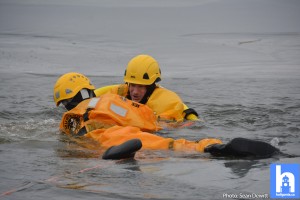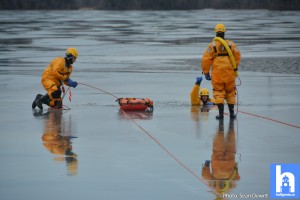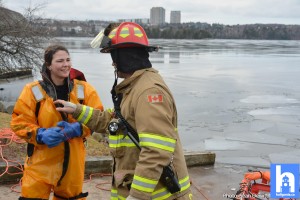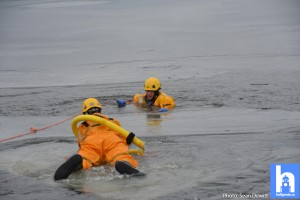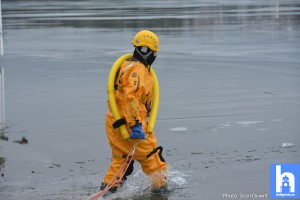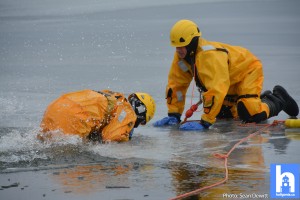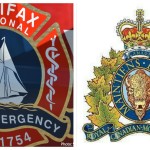Halifax Fire and Emergency have a wide variety of responsibilities, and seasonal practice keeps the firefighter ready for anything.
As the training on Lake Mic Mac allows crews to refresh and stay sharp on ice rescue techniques, this session qualified a member as ice rescue certified.
Technical teams respond to rescues with specialty gear and advanced training, adding to the fast and safe response from the HRFE.
Gear included for ice rescue teams includes a high visibility, warm and water sealed body suit that protects the rescuer from the harsh and cold elements of a Nova Scotia winter, especially when submerged in a frozen lake.
The thick suit also helps protect against some physical harm from breaking through ice and falls. This suit also includes a helmet, hood and sealed gloves.
Crews also use a rope and winch system that attaches to the rescuer. Crews on land keep appropriate tension on the lines as the rescuer navigates to and from the scene.
Using both vocal commands and visual signals, crews communicate frequently back and forth with needs and progress.
A device that looks very much like, and acts very much like, a pool noodle, can be used to help in rescues can be attached to ropes to help in recovery as well.
This device is also a bright yellow for visibility, is light to carry, and is very effective in rescues.
A recovery sled with floats can also be used by the first responders. This device is especially useful for rescues with injuries and is again connected by ropes and recovered by crews on land using the winch lines.
Other general gear can be used to aide in rescues through the ice.
Day or night, in storms or clear weather, responders are prepared with proper gear and thorough training.
However, the best advise is prevention. Stay off questionable ice (and check the HRM ice thickness website often). Don’t go on the ice alone and let others know where you’ll be and when you should be home.


